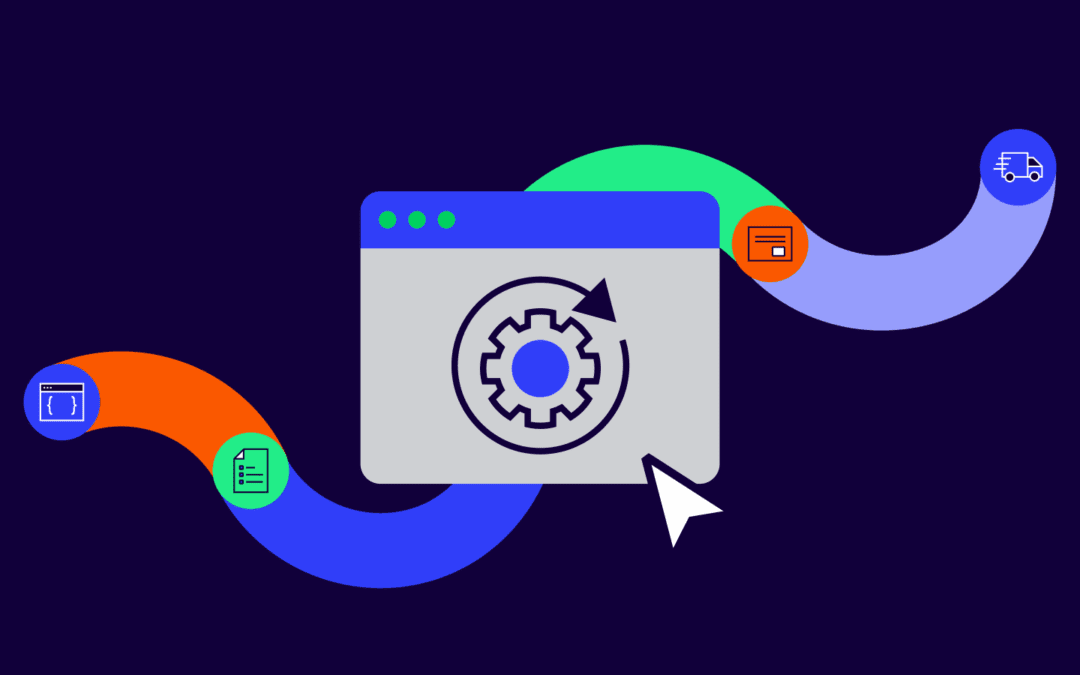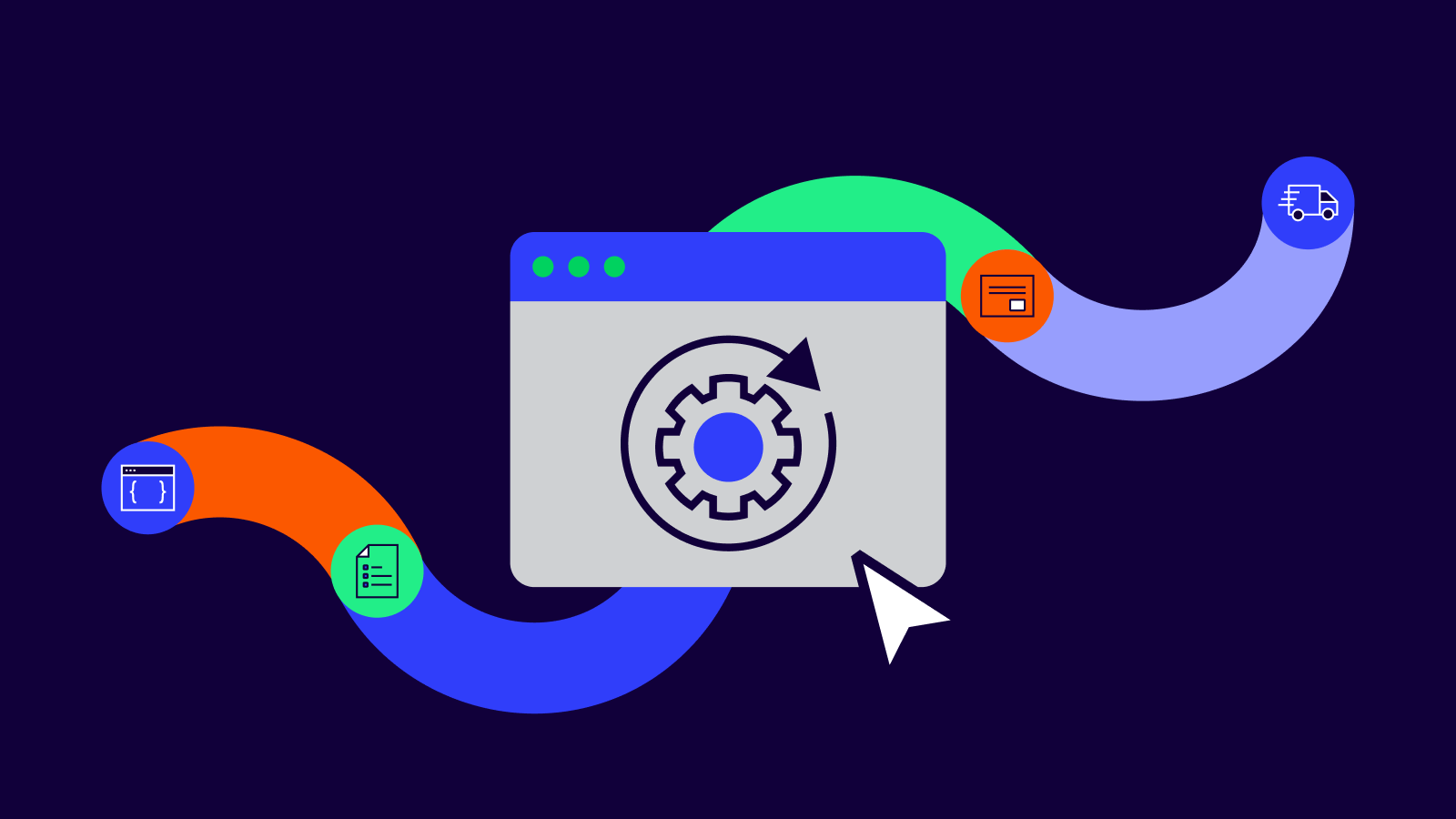
The companies that will thrive in 2026 have one thing in common: they’re automating the time-drains holding others back.
Business automation uses technology to handle repetitive tasks automatically—without human intervention—so your team can focus on higher-value work.
Your warehouse and operations teams process thousands of parcels daily. These tasks demand speed, accuracy, and carrier compliance. Enterprise brands like H&M require label generation in milliseconds to prevent bottlenecks at the pack bench, whilst customer service teams handle endless delivery queries that could be resolved automatically through enriched tracking data.
The good news? Business automation has never been more accessible or impactful. Organisations implementing automated workflows are saving 20+ hours weekly whilst reducing costs and improving accuracy. The technology exists. The ROI is proven. The question is: how much time will you save?
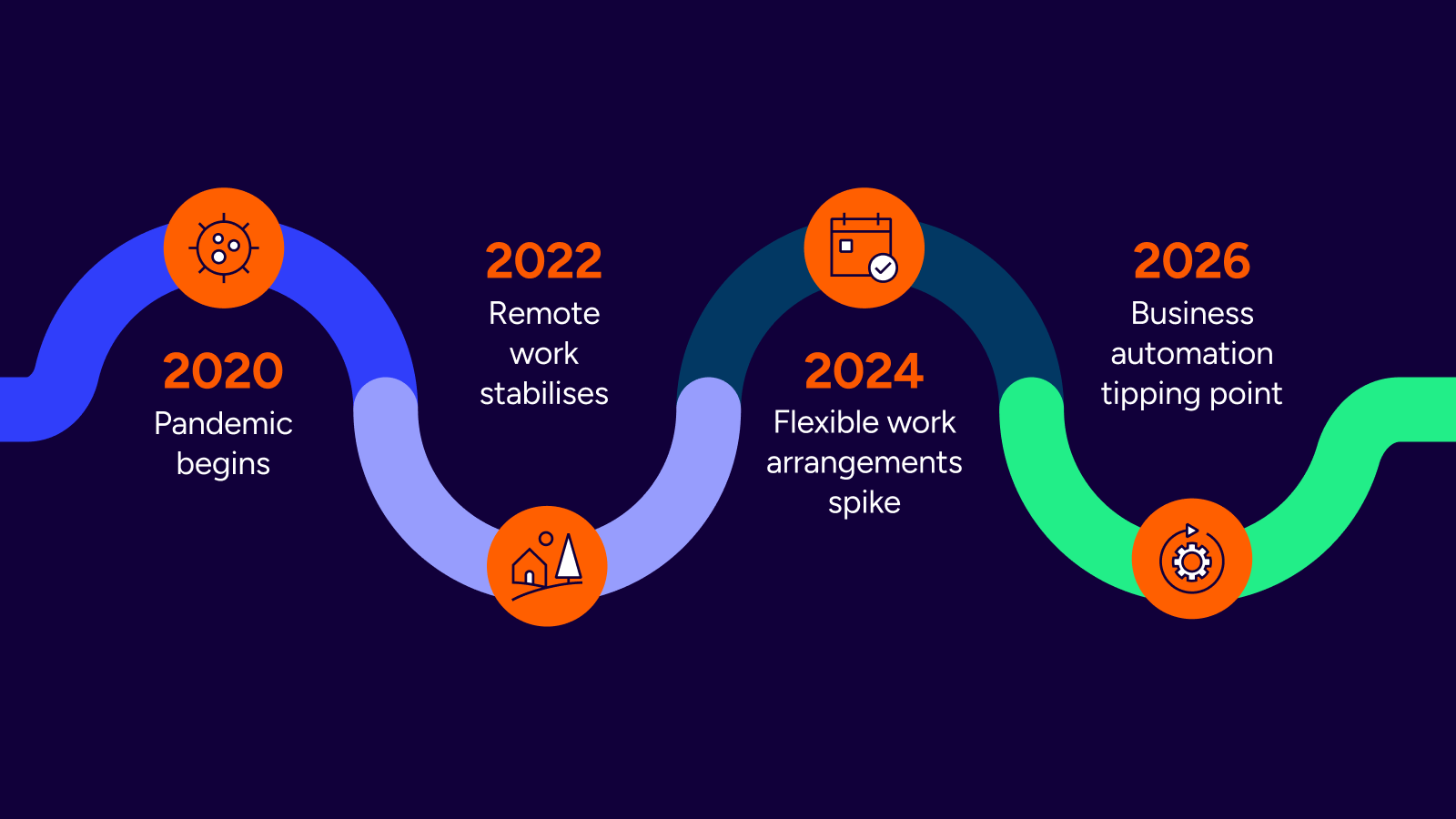
Why 2026 is the business automation tipping point
Business has fundamentally shifted. Recent UK workplace research shows that 44% of the workforce now spends at least some time working from home, reflecting a fundamental shift in how modern organisations operate—with 91% of UK employers now offering some form of flexible working arrangement.
This isn’t just about where people work. It’s about how work gets done. Teams need processes that function smoothly whether someone’s in the office, at home, or traveling. Manual handoffs and paper-based workflows create bottlenecks that slow things down.
European workplace surveys show that 87% of UK employees prefer a hybrid or remote working model, with 45% of workers willing to accept a lower salary to maintain their preferred flexible working arrangements.
Manual processes cost organisations 20-30% of revenue annually—costs that automation can significantly reduce whilst improving response times.
Time is the new competitive advantage
Speed matters more than ever. Research shows businesses implementing automation achieve an average ROI of 240%, typically recouping their investment within six to nine months, with top performers achieving ROI of up to 390%.
Customers notice the difference. When one company can process your request in minutes whilst another takes days, the choice becomes obvious.
Five time-drains business automation eliminates
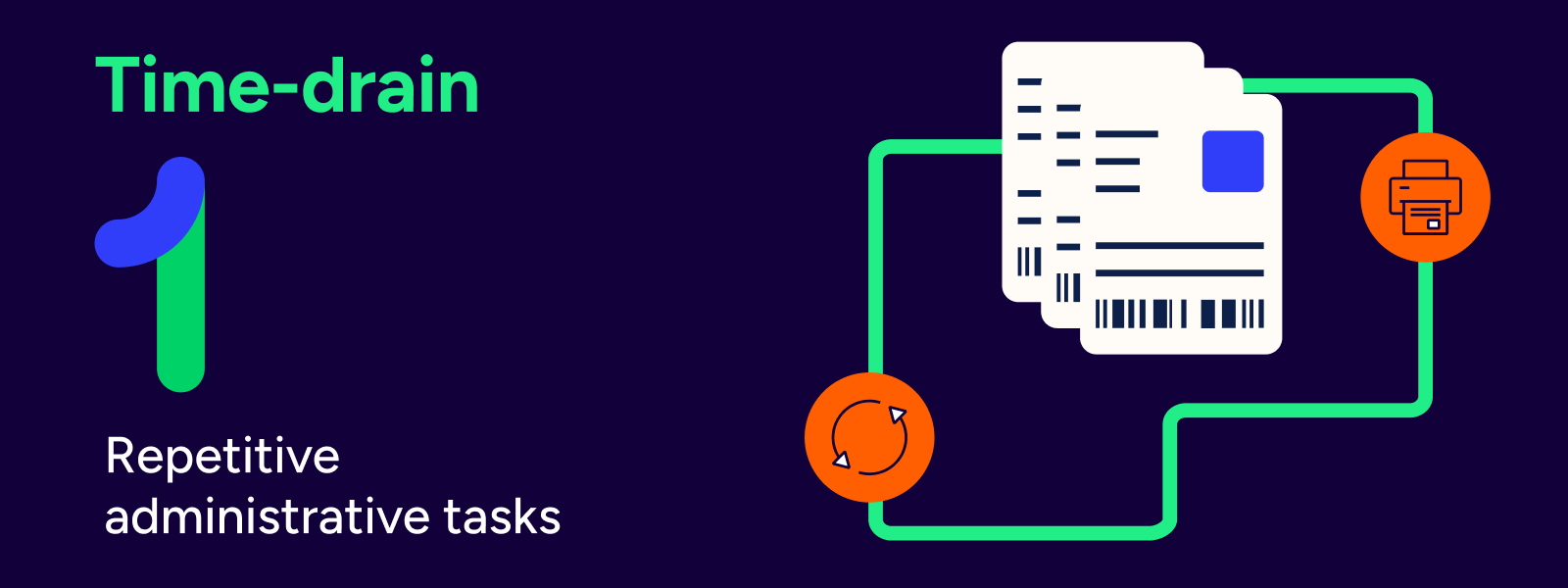
For enterprise retailers processing tens of thousands of daily orders, manual label generation creates critical bottlenecks. Each second lost at the pack bench during peak season compounds across your entire operation.
What automation looks like: Metapack’s platform generates accurate, carrier-compliant labels in under 300 milliseconds—supporting automated warehouses that process thousands of parcels hourly. The system applies correct carrier services based on sophisticated allocation rules,and handles customs documentation for cross-border shipments. Dynamic carrier allocation switches volumes between carriers instantly during network disruptions, with no operational impact on your warehouse. Real-time integration with 350+ carriers means your team never manually updates carrier requirements or service changes.
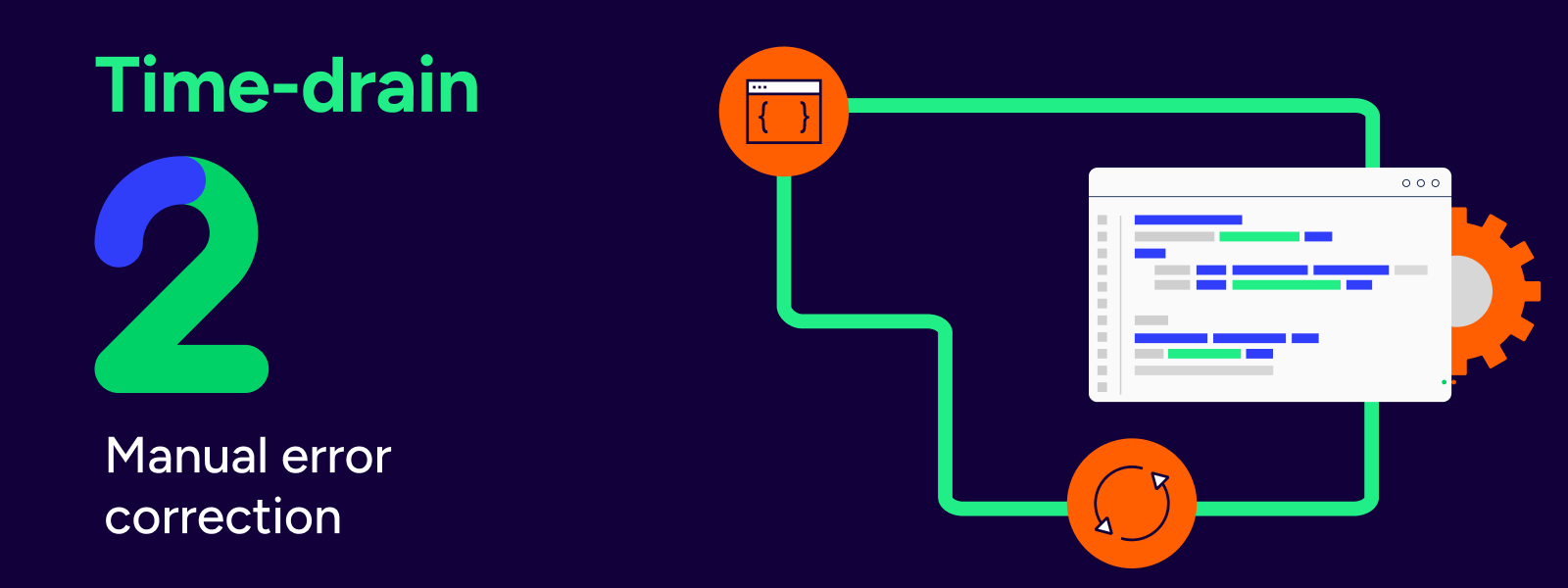
Manual processes create errors that require even more time to fix. Vena Solutions’ research shows 93% of IT professionals report increased satisfaction with their productivity after implementing automation—largely because they spend less time correcting mistakes.
What automation looks like: Automated data validation catches incorrect information before it enters your system, preventing costly mistakes. Customer relationship management systems automatically verify contact details and flag duplicates. Address validation prevents shipping delays and failed deliveries before labels are printed. Accounting software reconciles transactions automatically, eliminating manual bank statement matching.
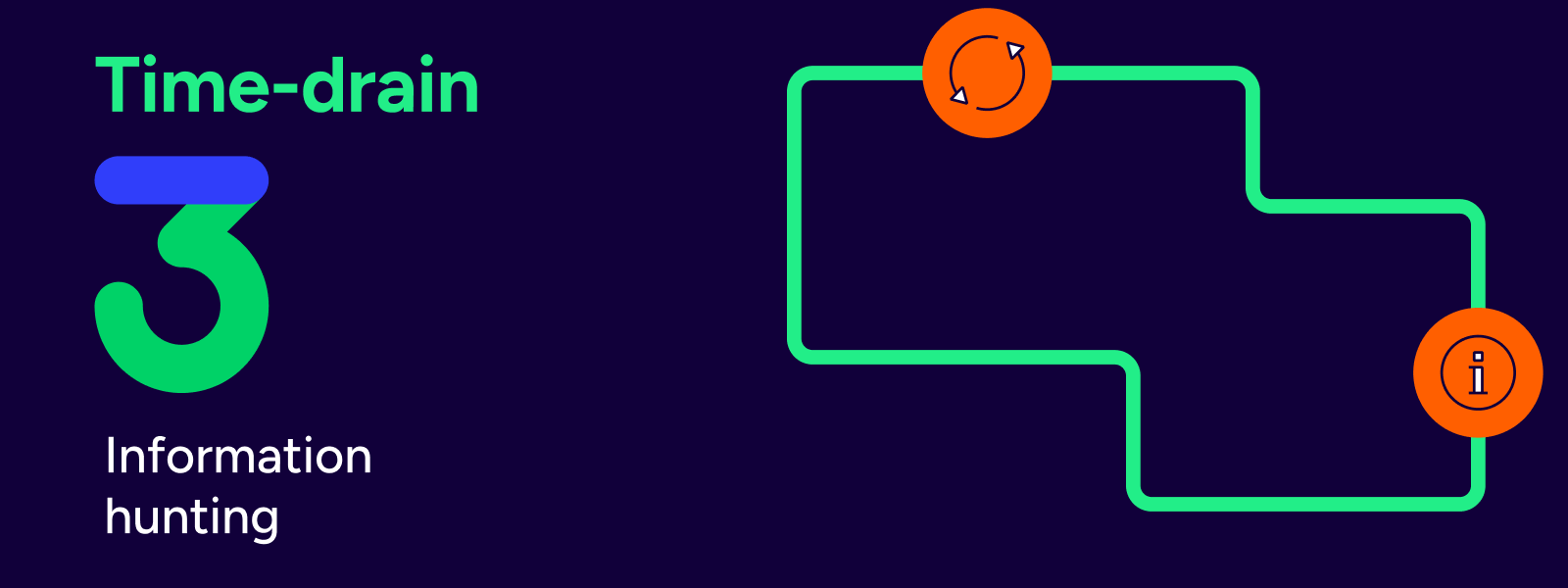
How much time does your team spend tracking down information? Looking for documents, checking order status, finding contact details—these micro-tasks add up quickly.
What automation looks like: CRM systems store all customer interactions in one searchable place, automatically populating shipping information across order processing, support tickets, and delivery notifications. Project management tools automatically track task progress and deadlines. Shipping management systems provide real-time package tracking across all carriers from a single dashboard. Integrated platforms automatically populate customer information when you need it, whether for invoicing, support tickets, or shipping labels.

Manual status updates consume enormous amounts of time. Checking on orders, updating customers, coordinating between departments—automation handles these communications automatically.
What automation looks like: Email marketing platforms automatically send follow-up sequences to new leads. Automated text messages for business notifications keep customers informed about shipping status, delivery updates, and order confirmations without manual intervention from your team. Customer service systems generate automatic responses to common questions. Shipping platforms automatically send tracking notifications when orders ship and delivery confirmations when packages arrive. Project management tools send automatic status updates to team members without manual intervention.
For enterprise operations, WISMO (Where Is My Order) queries represent a significant cost centre. Without unified tracking data across multiple carriers and shipping methods, customer service teams spend hours manually checking disparate carrier portals and piecing together delivery information.
Enhanced automation capability: Metapack processes over 15 billion tracking events annually, normalising data from 350+ carriers into consistent, jargon-free updates. This enriched tracking data integrates with AI-powered customer service tools, enabling automated responses that actually resolve queries rather than frustrating customers with generic information. Intelligence tools identify parcels likely to encounter issues, allowing proactive customer notification before problems escalate into service contacts.
Industry research shows that organisations implementing automation report significant improvements in communication efficiency, with 92% of businesses experiencing improved compliance and operational workflows.
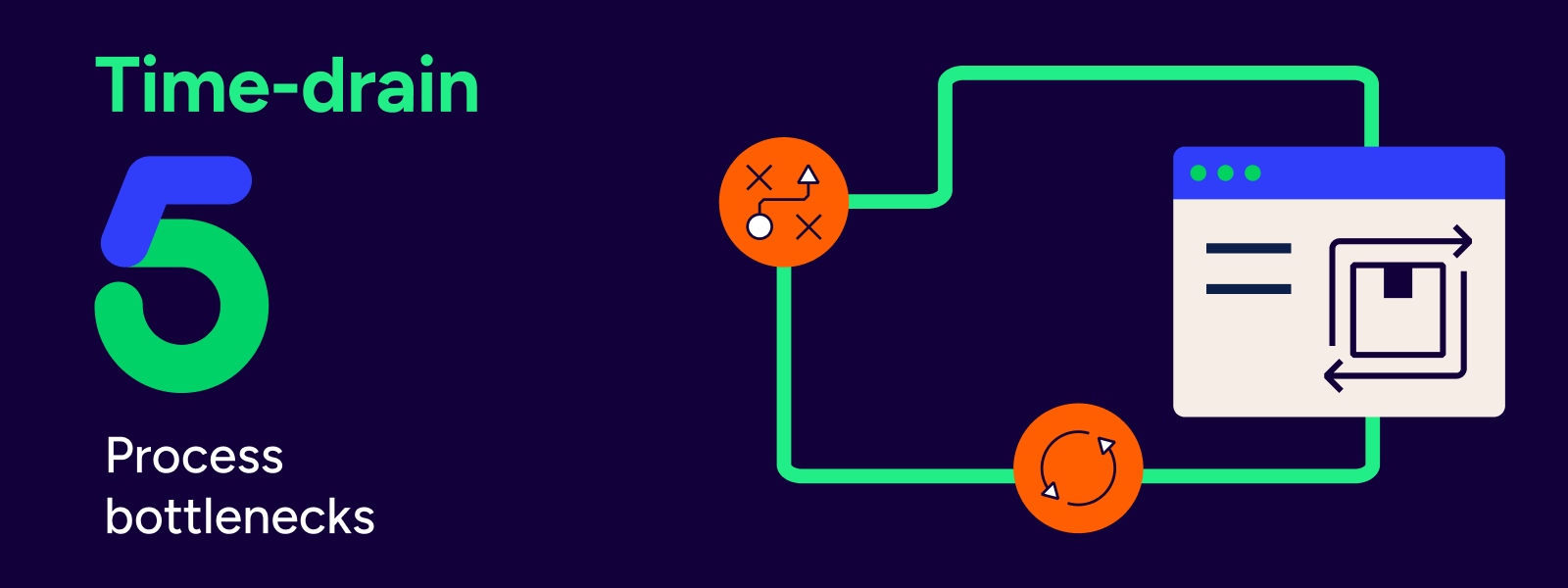
Every manual handoff creates a potential bottleneck. Orders waiting for shipping rate quotes, inventory updates sitting in queues, returns stalled until someone processes refund approvals, peak season volumes overwhelming manual workflows.
What automation looks like: Approval workflows automatically route documents to the right people for sign-off. Customer orders flow seamlessly from eCommerce platforms to shipping carriers without manual data entry. Automated invoicing triggers when services are completed or packages are delivered. Peak season scaling systems handle increased shipping volumes without proportional staff increases, preventing holiday bottlenecks.
The real cost of manual time-drains
Time investment calculation
Research shows manual processes can cost organisations 20% to 30% of revenue annually.
Here’s what that looks like for a typical business:
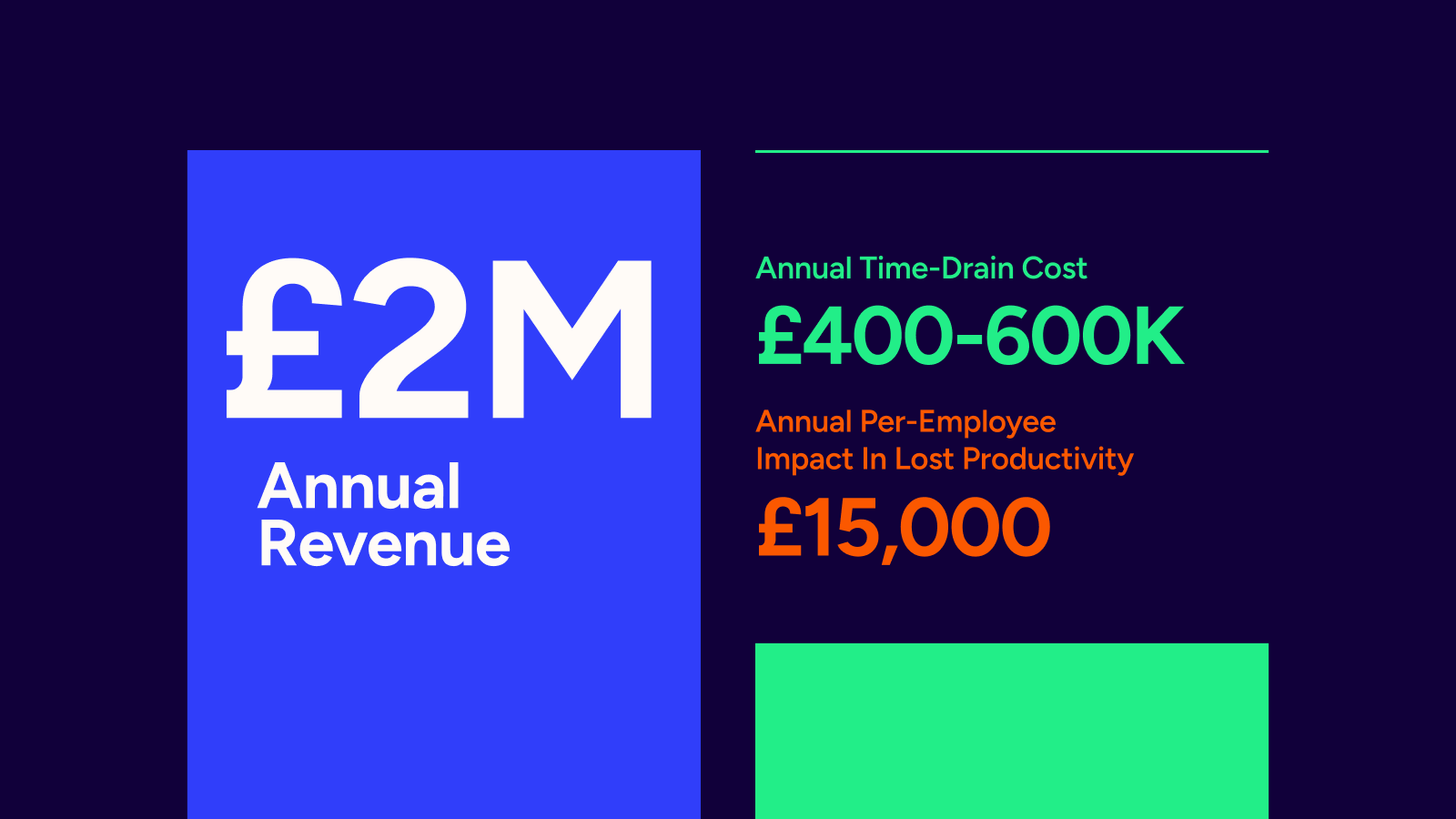
Five hidden time costs
Business efficiency research reveals time-drains beyond the obvious:
- Delayed responses: Slow processes frustrate customers
- Rework cycles: Manual errors require time to fix
- Context switching: Jumping between tasks wastes mental energy
- Information delays: Waiting for updates stalls decision-making
- Growth limitations: Manual processes don’t scale efficiently
Business process automation benefits
Organisations that save time through automation gain more than efficiency. They reinvest those hours into activities that drive growth: customer service, product development, strategic planning, and business expansion.
Why enterprise delivery management automation delivers maximum value
The enterprise delivery challenge
Enterprise brands operate at a scale where manual processes aren’t just inefficient—they’re impossible. When you’re processing 50,000+ daily orders across multiple warehouses, shipping to dozens of countries, and managing peak season spikes of 200%, delivery management becomes a strategic differentiator, not just an operational task.
Order fulfilment touches every business function. Warehouse operations, customer service, carrier management, finance, and fraud prevention all depend on delivery data and processes. This complexity multiplies when you’re managing:
- Multiple warehouse locations with different carrier contracts
- Cross-border shipping with customs compliance
- Out of Home delivery networks across Europe (1.3 million+ PUDO locations)
- Seasonal volume fluctuations requiring dynamic carrier allocation
- Customer service teams resolving thousands of delivery queries daily
Time savings through intelligent automation
Metapack’s delivery experience platform saves time across your entire end-to-end delivery journey—from the moment an order enters your warehouse until it reaches your customer’s doorstep and beyond.
In the warehouse: Sub-300 millisecond label generation supports automated pick-and-pack operations processing thousands of orders hourly. Sophisticated allocation rules automatically select the optimal carrier service for each parcel based on destination, weight, delivery promise, cost, and real-time carrier performance—removing the need for manual decision-making or complex routing logic in your warehouse management system.
In transit: Unified tracking across 350+ carriers provides your customer service teams with instant visibility into any delivery, eliminating time spent checking multiple carrier portals. Proactive exception notifications flag potential issues before customers contact you.
At resolution: Enriched tracking data enables AI-powered customer service automation that actually resolves queries rather than deflecting them. Detailed delivery performance analytics identify patterns requiring carrier intervention, supporting data-driven contract negotiations.
Immediate impact at enterprise scale
Unlike SMB shipping solutions, Metapack is engineered for complexity. Our platform handles consolidated shipments, multi-leg international deliveries, drop-ship vendor coordination, and own-fleet integration—supporting the sophisticated delivery strategies enterprise brands require.
Most enterprise implementations show measurable time savings within the first month, with warehouse efficiency gains becoming immediately apparent during initial testing phases.
The 2026 time-saving landscape
AI business automation becomes standard
Research shows 78% of companies have implemented or plan to implement automation, with 72% of organisations strongly supporting intelligent automation strategies as essential for competitive advantage.
The global workflow automation market reaches £19 billion in 2025, driven by organisations seeking efficiency gains and digital transformation.
AI transforms automation capabilities
AI business process automation represents the next evolution in delivery management efficiency. Intelligent systems are increasingly empowering delivery operations through predictive analytics that identify shipments likely to encounter issues—flagging potential delays, address problems, or carrier disruptions before they impact customers. This proactive approach transforms reactive customer service into strategic prevention.
Beyond prediction, AI develops tailored insights that enable rapid decision-making across your delivery operations. Rather than manually analysing thousands of shipments to identify patterns, AI surfaces the specific issues requiring immediate attention, optimises carrier selection based on real-time performance data, and adapts fulfillment workflows dynamically as order volumes fluctuate. These context-aware recommendations help operations teams make informed decisions in seconds rather than hours.
By 2026, businesses leveraging AI-powered delivery automation will operate with unprecedented speed, accuracy, and efficiency—spotting problems before they escalate and continuously optimising their carrier strategy based on actual performance rather than assumptions.
Time as a differentiator
In 2026, the fastest companies will win. Customers choose vendors that respond quickly. Workers prefer organisations that respect employees’ time. Partners work with businesses that operate efficiently.
Business automation provides the time advantage that separates organisations that thrive from those that flounder.
Your time-saving transformation
Start with high-impact areas
Focus first on processes that consume the most time or create the biggest bottlenecks. Shipping automation often provides the best starting point because:
- Immediate time savings: Results show up quickly
- Universal benefit: Every department gains efficiency
- Cost reduction: Lower expenses plus time savings
- Error elimination: Automated accuracy saves correction time
The right business process automation software makes the difference between scattered tools and seamless operations. Look for platforms that integrate with your existing ecommerce systems and handle your highest-volume shipping processes first.
Build momentum
Success with one automated process creates enthusiasm for more. Teams that save time through shipping automation become advocates for broader efficiency improvements.
Scale systematically
Once you’ve proven the time-saving benefits, expand automation to other high-impact areas. Marketing workflows, financial reporting, and HR processes all offer significant time-saving opportunities that complement your streamlined fulfilment operations.
Start with platforms that address your highest-impact processes. Enterprise automation strategies typically integrate warehouse management systems with delivery management platforms like Metapack (for intelligent carrier orchestration across 350+ global carriers), customer service platforms enhanced with enriched tracking data, and analytics tools that provide visibility into end-to-end delivery performance.
The competitive advantage of saved time
In summary: Businesses thriving in 2026 will have automated their time-drains and redirected those hours toward growth activities. They will respond faster, operate more efficiently, and focus on what matters most.
The reality: Every hour spent on manual processes is an hour competitors use for strategic advantage. The businesses saving time through automation today will dominate their markets tomorrow.
Your opportunity: Business automation isn’t about replacing people—it’s about giving them time to do what they do best. Start with shipping automation and discover how much time your business can reclaim.
Ready to eliminate delivery management bottlenecks at enterprise scale? Discover how Metapack’s platform delivers sub-300ms label generation, unified tracking across 350+ carriers, and intelligent automation that scales with your peak season demands. Transform your delivery operations.
